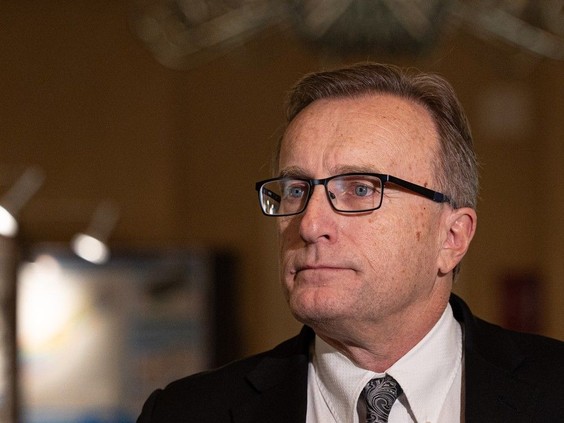
The mining industry posted the highest value of sales on record in 2022, doubling its previous record.
Saskatoon StarPhoenix Staff
A mining project in northern Saskatchewan that could develop into one of the world’s premier sources of uranium continues to slowly but steadily move forward.
Rook I, the largest development-stage uranium project in Canada, received approval earlier this month under the province’s Environmental Assessment Act to construct, operate, and decommission the underground uranium mine and surface processing facility.
Development of the project — located around 640 kilometres northwest of Saskatoon, near Clearwater River Dene Nation and Buffalo River Dene Nation in a uranium-rich area of the Athabasca Basin — has to commence within five years.
Nick Espenberg, director of mining technical services with NexGen Energy, said the company has worked “very closely” with local First Nations and Metis communities “over the last number of years.”
The company, he added on Tuesday, is “very focused on doing things right.”
Earlier this year, NexGen and Metis Nation-Saskatchewan announced what MN-S regional director Leonard Montgrand called “a milestone” deal for the Metis people.
An impact benefit agreement for the Rook I project was signed that includes all seven Metis locals. The IBA provides MN-S support for the development of the project, as well as commitments to collaborate on environmental and social concerns. The agreement also features the sharing of benefits that include commitments for Métis training, employment and business opportunities, and a royalty payment.
When the project comes online, Espenberg said on Tuesday, it will account for around 23 per cent of the world’s uranium production.
“We want to do things the right way,” he said, adding that they are focused on “bringing elite standards to everything we do.”
Noting that it hasn’t been “a straight line from construction to commissioning,” the company now awaits a federal review and approval from the Canadian Nuclear Safety Commission. NexGen hopes to bring production online within the decade.
The provincial government says Saskatchewan continues to make gains in exploration and spending in the area of critical minerals, with figures showing its sales of minerals doubled in 2022.
The mining industry posted the highest value of sales on record in 2022, doubling its previous record. Mineral sales for fiscal 2022 totalled more than $19 billion, the government announced Tuesday.
“This has been a very exciting year for the mineral exploration sector in Saskatchewan, and we are seeing solid progress toward our goal to increase Saskatchewan’s share of Canadian mineral exploration spending to 15 per cent by 2030,” Energy and Resources Minister Jim Reiter said.
“Long-term global trends, like growing populations and changing technology, are driving interest in our mineral resources.”
Reiter conceded that it has been a tough year for potash, largely because of low prices, but said it’s been “a very good year” for sales.
“We’re very bullish on the mining industry,” he said. “You’re going to see those kinds of hiccups. I think in most industries, those sorts of things happen. We’re still very optimistic in the long term.”
While Reiter and the provincial government highlighted the successes of the province’s minerals industry, challenges remain and conversations are still required.
Leaders from First Nations across the Prairies earlier this year said they plan to pursue legal action against provincial and federal governments for allegedly breaching treaty agreements and failing in their duty to consult. Leaders said they feel that agreements — including the 1930 Natural Resources Transfer Agreement and Treaty Land Entitlement Framework — are being ignored.
“What we are saying is our treaties are of international law,” FSIN Chief Bobby Cameron said during an August press conference.
The province has upwards of 12 million hectares of land under mineral disposition, and it has attained roughly 50 per cent more explorable areas compared to 2020.
More than 100 companies are engaged in mineral projects in Saskatchewan, ranging from early-phase exploration to large scale projects underway.
Saskatchewan ranked first in Canada for gaining investments in mining, according to the Fraser Institute’s 2022 Annual Survey of Mining Companies. The province has 23 of 31 critical minerals in Canada and contains the world’s largest deposits of potash and high-grade uranium.
— With Saskatoon StarPhoenix files from Michelle Berg

